If you are in Milan and suddenly get a strong desire of mountain this post is for you!
Aosta, together with the naturalistic beauties and the cultural heritage of the Aosta Valley is a perfect destination for a day trip or weekend from Milan.
Well connected by the highway, in just two and a half hours by bus this stunning scenery of the Alps will be at your feet.
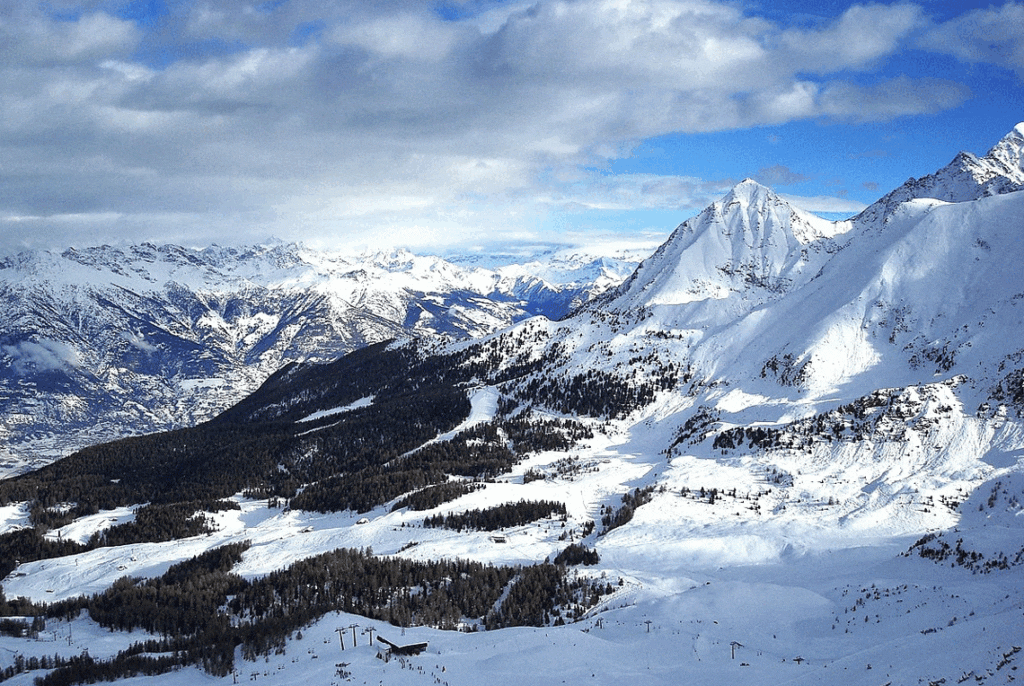
The city of Aosta is set at 583 meters above sea level and is surrounded by the most impressive mountains of Europe, such as Monte Rosa, Monte Cervino and the famous Monte Bianco (Mont Blanc – the Western Europe’s highest peak). The city was built at the confluence of the river Dora Baltea with the river Buthier where cross two historic path leading to France and Switzerland through the alpine passes of Piccolo San Bernardo and Gran San Bernardo.
💡 Interesting to know:
Aosta is also defined as the Rome of the Alps for the great number of still visible Roman remains. The name Aosta derives from Augusta Praetoria Salassorum and was founded by Augustus in 25 B.C. with 3.000 soldiers of the praetorian courts. Valle d’Aosta literally means Valley of Augustus. The urban layout is still the Roman one, formed by a rectangle bordered by walls, inside which stretch perpendicular roads.
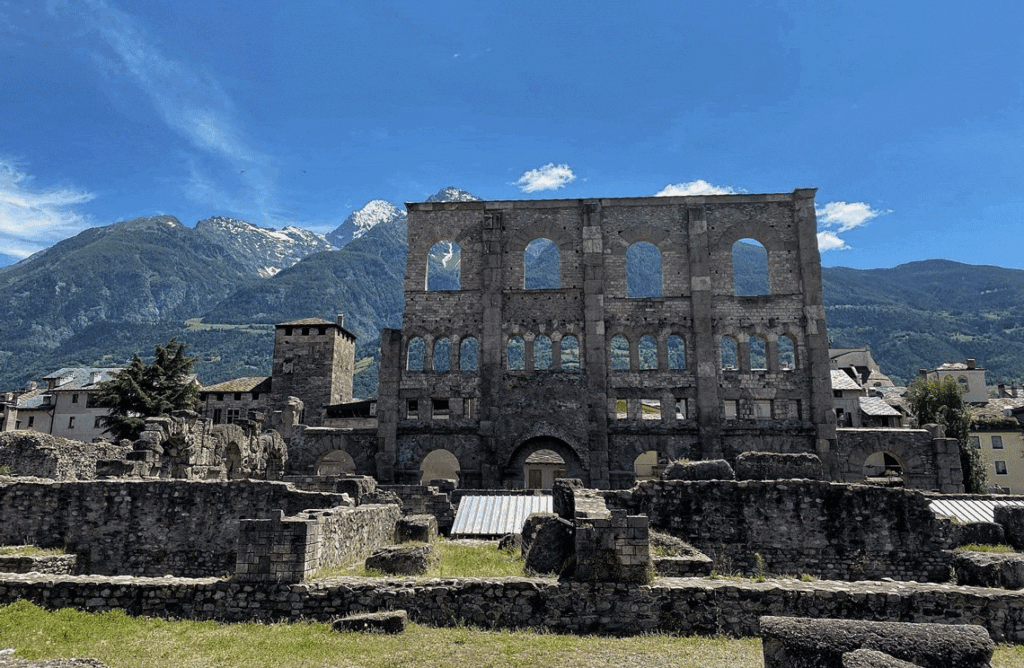
The typical products and handicrafts of the Aosta Valley attract thousands of tourists every year. Thanks to its geographical position and its rich biodiversity, the Aosta Valley is a generous land rich in excellent raw materials.
The region boasts products that have been awarded the Protected Designation of Origin, including: delicious Fontina cheese, Valle d’Aosta Fromadzo, Jambon de Bosses and Vallée d’Aoste Lard d’Arnad, delicacies to be enjoyed in combination with the best DOC wines of the Aosta Valley. Moreover, Aosta Valley is the first Italian region completely GM free. In other Italian regions there is a rule valid only for maize cultivation but in Aosta Valley the ban is applied on all aspects of agriculture.
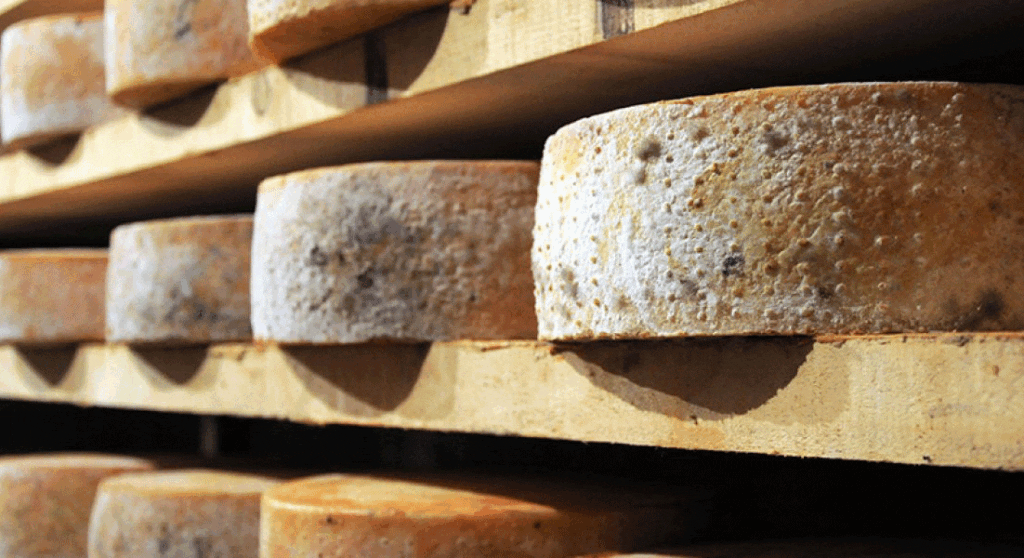
I personally love the atmosphere that embraces the historic center of Aosta between late November and January. If you happen to go in this period you will have the possibility to experience the Christmas market Marché Vert Noël where the handicraft on display includes the best local wooden objects, clothing accessories and decorations, typical food and wine products, tasty sweets and pastries.
If well planned a day will be enough to visit the whole city and its main monuments.
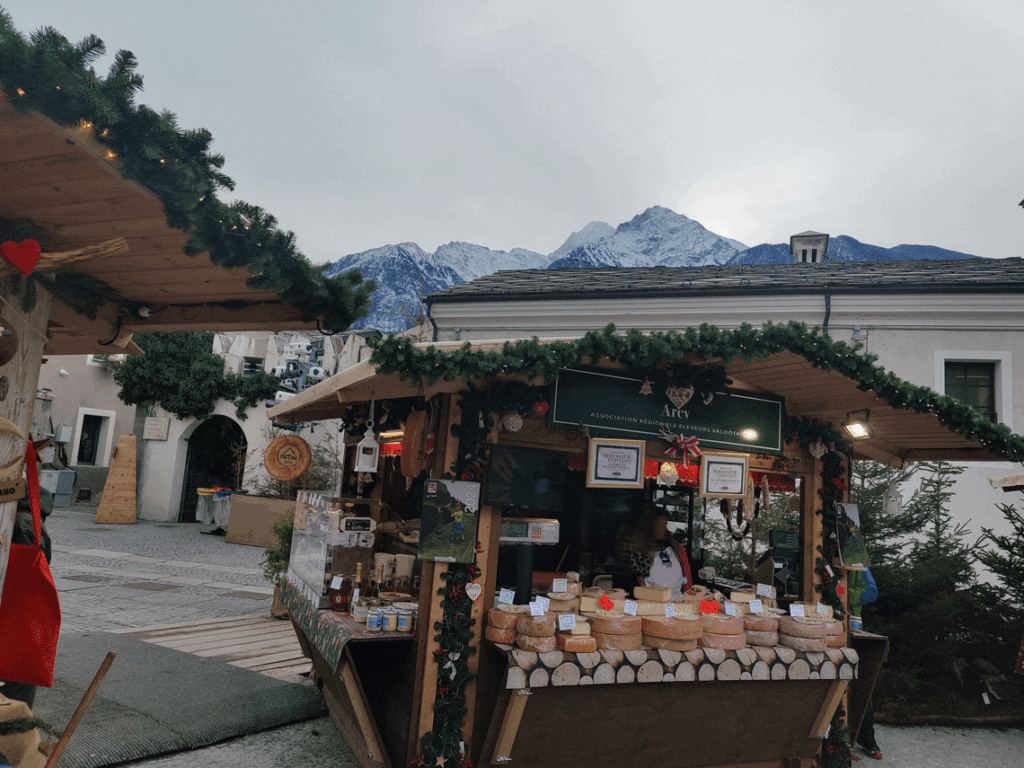
💡 Interesting to know:
In Valle d’Aosta you will notice that the road signs bear bilingual texts, in French and in Italian, and almost all the local place names are of Francophone derivation. But what are the origins of bilingualism in the Aosta Valley?
In 575, Pont-Saint-Martin became the border of the Frankish kingdom and the Aosta Valley was annexed to the Kingdom of Burgundy (Gallo-Roman linguistic area), where Latin evolved into Franco-Provençal. From 1200, Latin was slowly replaced by French in the written language, until, in 1561, Duke Emanuele Filiberto di Savoia adopted French, replacing Latin, for all public acts in the territory of the Duchy.
Since the 17th century, French has been taught in the Collège Saint-Bénin in Aosta and in rural schools. In 1860, Savoy was annexed to France, and the Aosta Valley remains the only Francophone territory in Italy. Italian language became official only in 1861 following the establishment of the Kingdom of Italy. French was banned during fascism.
In 1948, the Special Statute of Autonomy establishes the equality of the Italian and French languages in the Aosta Valley.
Where to start?
The Roman bridge
Start the visit to the historic center of Aosta from its Roman bridge dating back to the Augustan era, also known as Pont de Pierre or Stone Bridge.
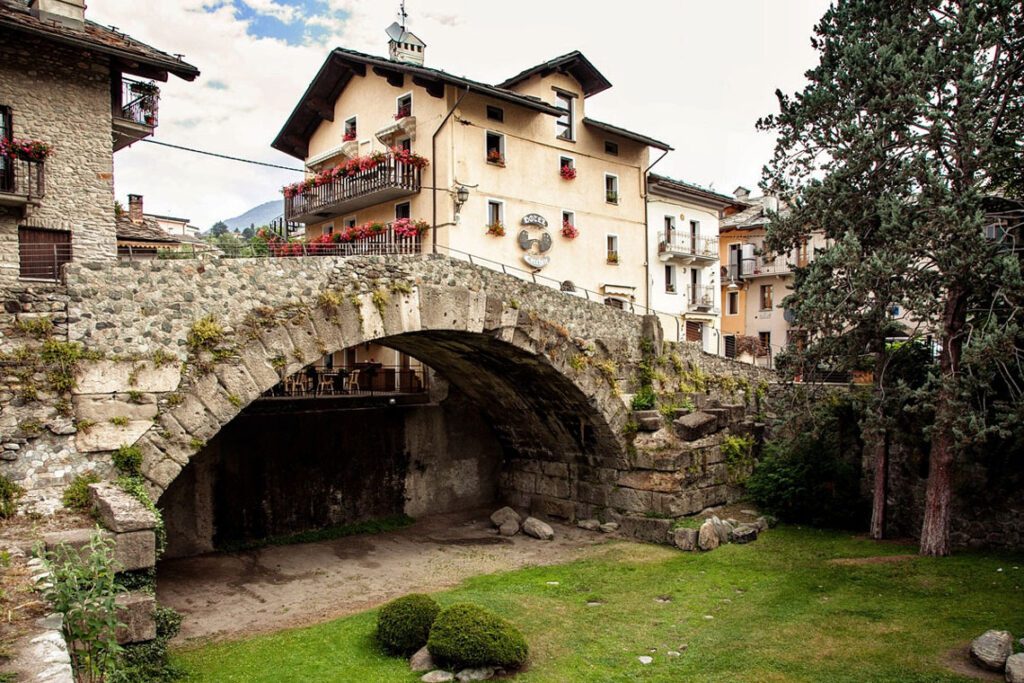
This roman bridge together with the bridge Pont Saint Martin are the only ones preserved in the Aosta Valley. Pont de Pierre was a part of the Strada delle Gallie, the road that connected Augusta Praetoria with Eporedia (Ivrea) and allowed to overcome the Buthier stream to reach the Roman city.
The Arch of Augustus
Proceed towards the heart of the historic center of Aosta. From the top of the Roman bridge you might have noticed already the Arch of Augustus.
The imposing monument was a part of the propagandist scenography of the entrance into the Roman city able to surprise anyone who reached it after traveling the road of the Gauls.
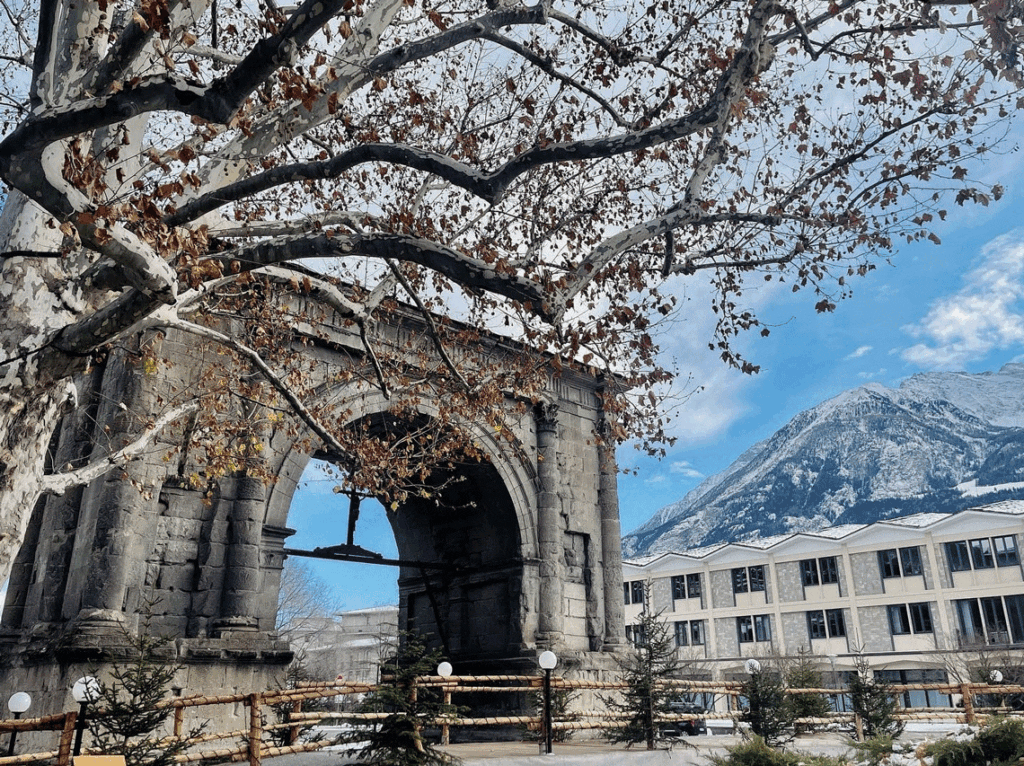
The Arch of Augustus was erected in 25 BC during his reign to honour the emperor and his victory over the Salssi. Its dimensions are important, about 9 meters wide, formed by a single round fornix and with massive pillars at the sides surmounted by Corinthian capitals. Today the monument is surrounded by a large garden and stands in the middle of a busy road.
Collegiate Church of Saints Peter and Bear
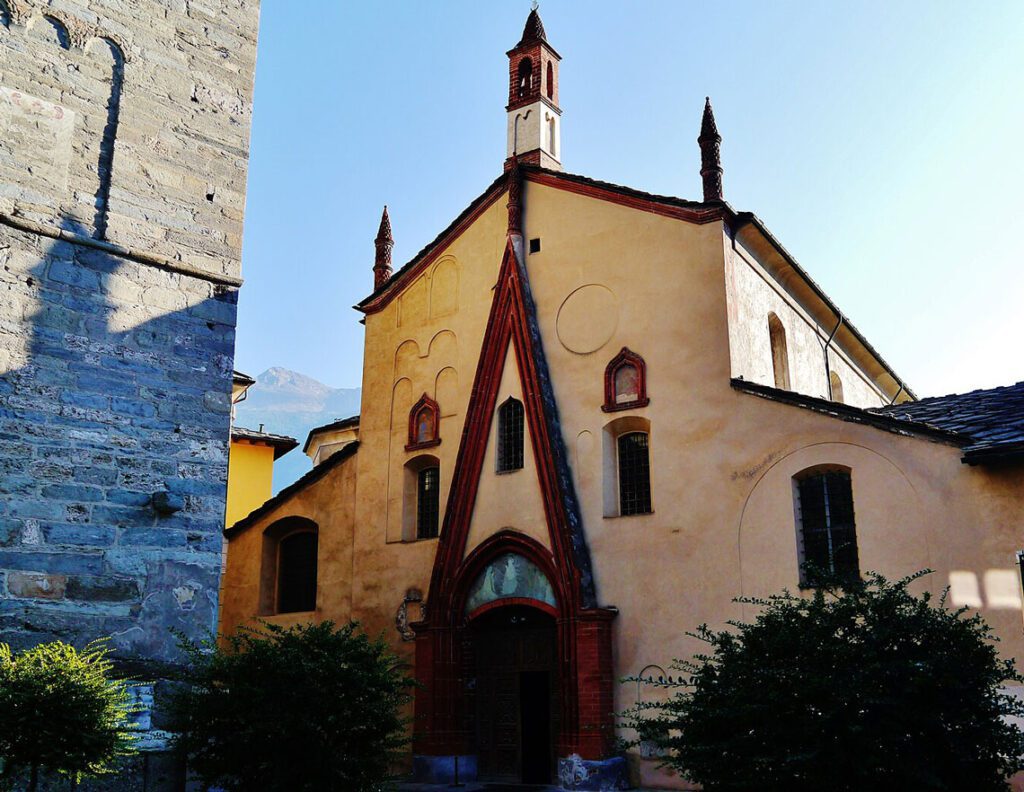
It is among the most important testimony of the history of sacred art in Valle d’Aosta. The church dates back to the fifth century and hides many decorations and treasures inside. You will see the richly carved wooden choir dating back to the fifteenth century, the Romanesque crypt, the frescoes on the walls and the mosaic on the ground in the choir (dating back to the twelfth century and representing Samson killing the lion) and an important cycle of Ottonian frescoes visible in the attic. These last frescoes are visible for a small fee with a guided tour, the rest of the church is free.
Romanesque Cloister of Sant’Orso
In front of the Collegiate Church there is an access to the Romanesque cloister of Sant’Orso built in Romanesque style probably in the 12th century when pope Innocent II imposed the Augustine rule on the canons of St. Orso.
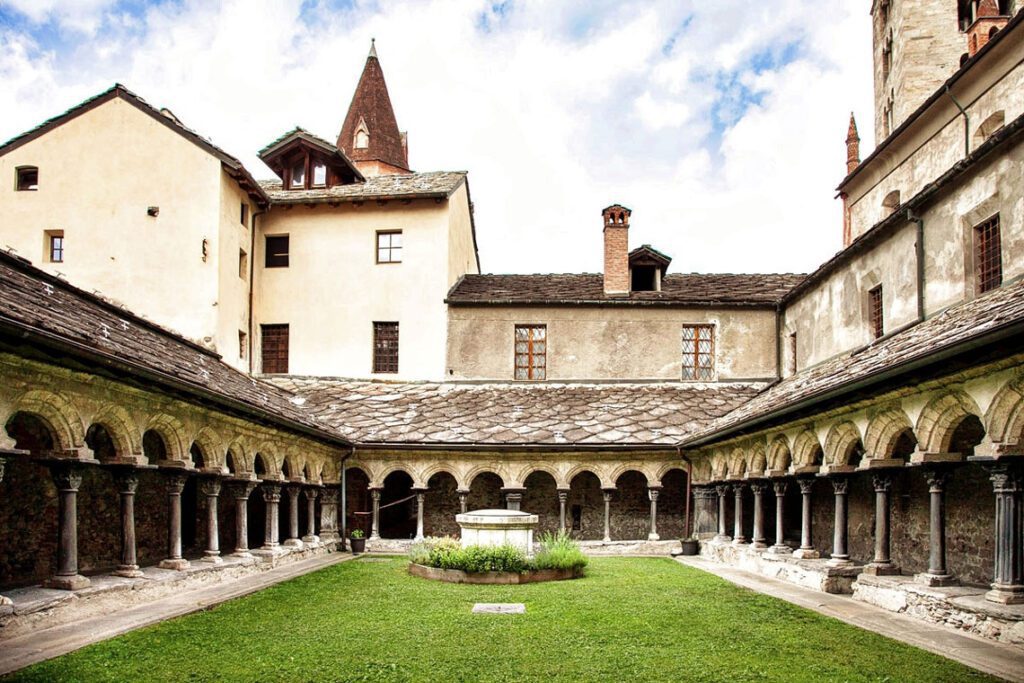
The capitals of the porch all different from one another and decorated mainly with figures or narrative scenes are considered a masterpiece of Romanesque art (37 carvings remained of the original 52).
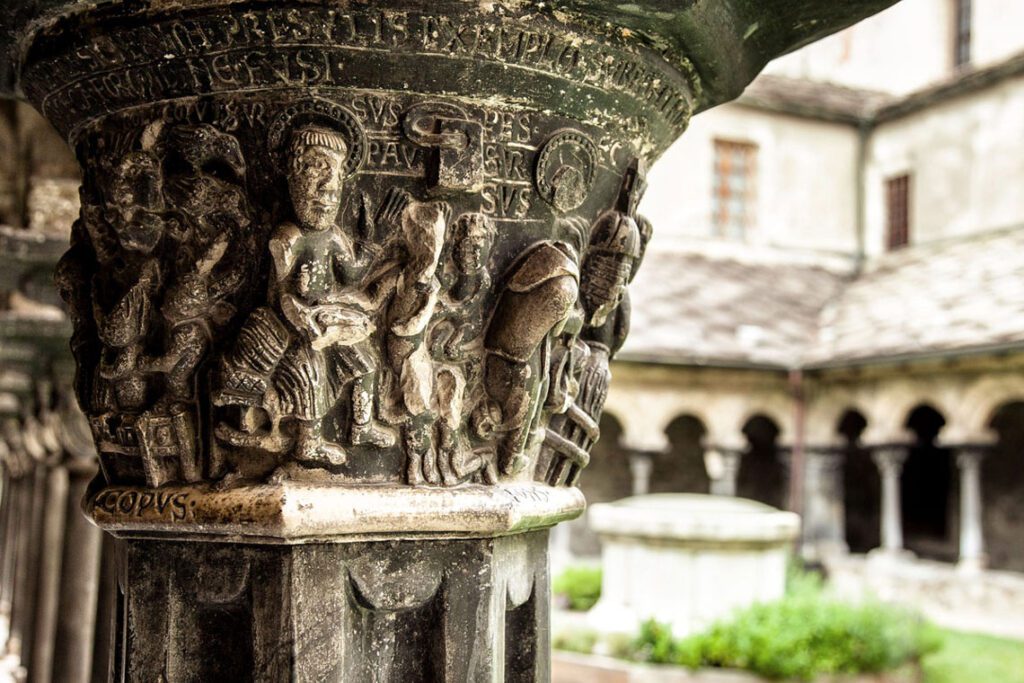
Centuries-old linden
Within the cloister you will notice a huge linden tree: it has spent almost 500 winter seasons! The tree was in fact planted between 1530 and 1550 to replace an even older one felled by a strong wind according to the legend by Sant’Orso.
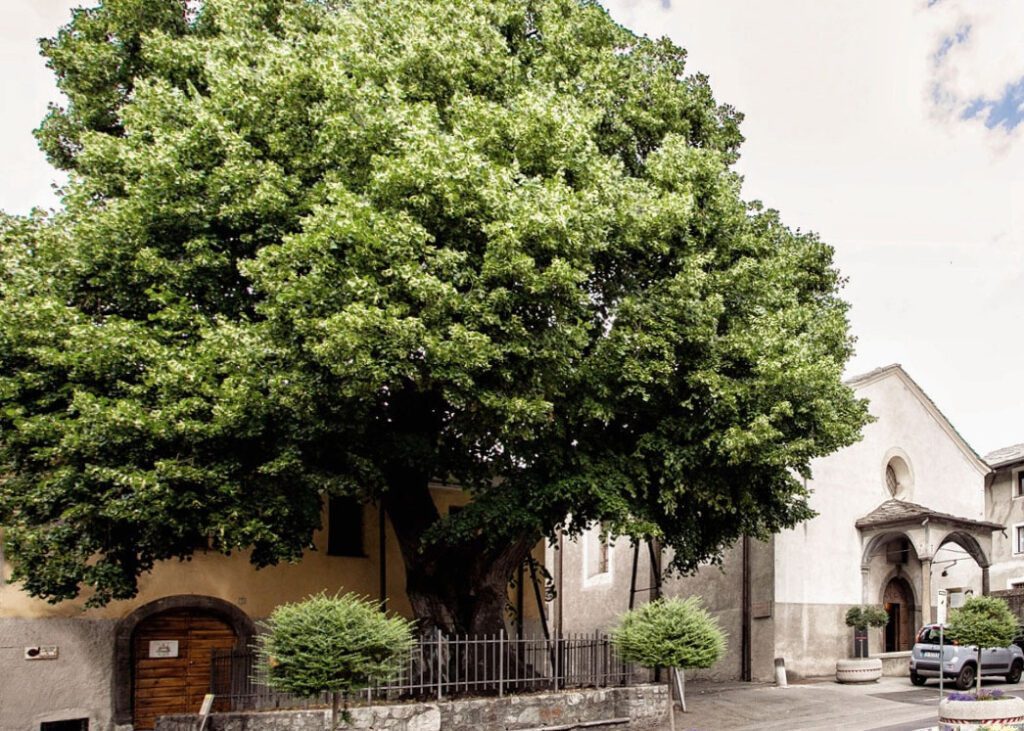
The present tree was declared a national monument in 1924. The centuries-old linden tree was damaged by a violent storm in 1951, of which it still bears the marks in a visible cavity. However, every year it continues to grow and bloom 🌳.
Porta Pretoria
About 300 meters away from the Arch of Augustus there is Porta Praetoria which used to be the main entrance of the city and is currently the only one that has been preserved. It consisted of 2 rectangular towers with three floors and an internal courtyard used as a space for weapons.
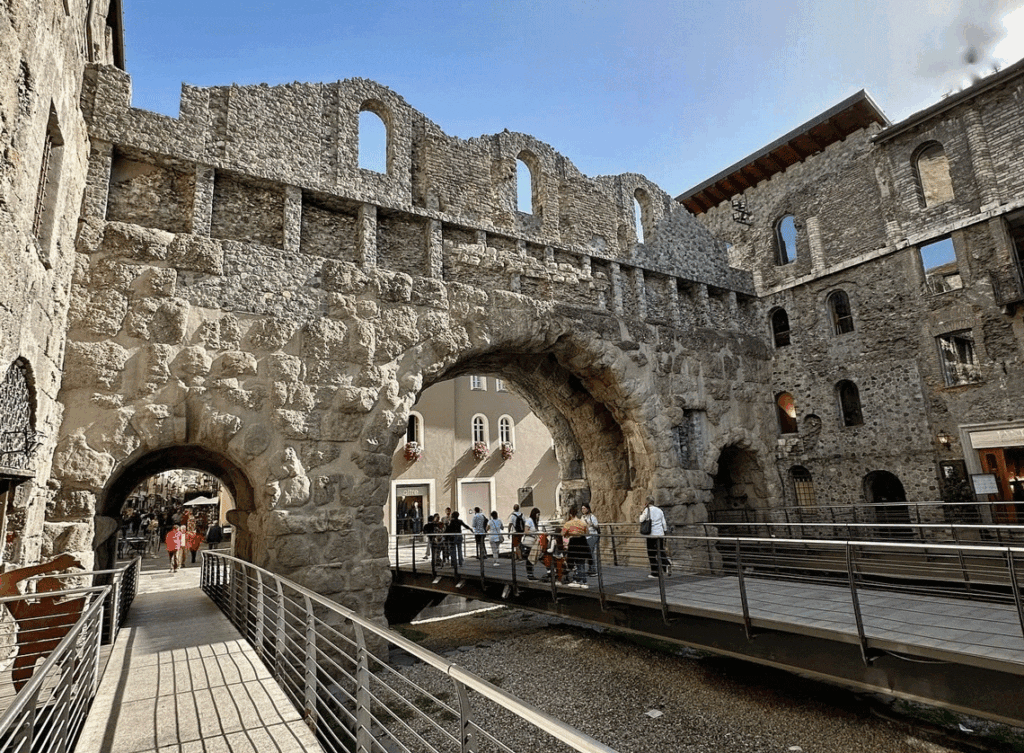
The central fornix was reserved to wagons, while the one at the sides were used by pedestrians. Guarded by guards, the Porta Praetoria was further protected by mighty shutters.
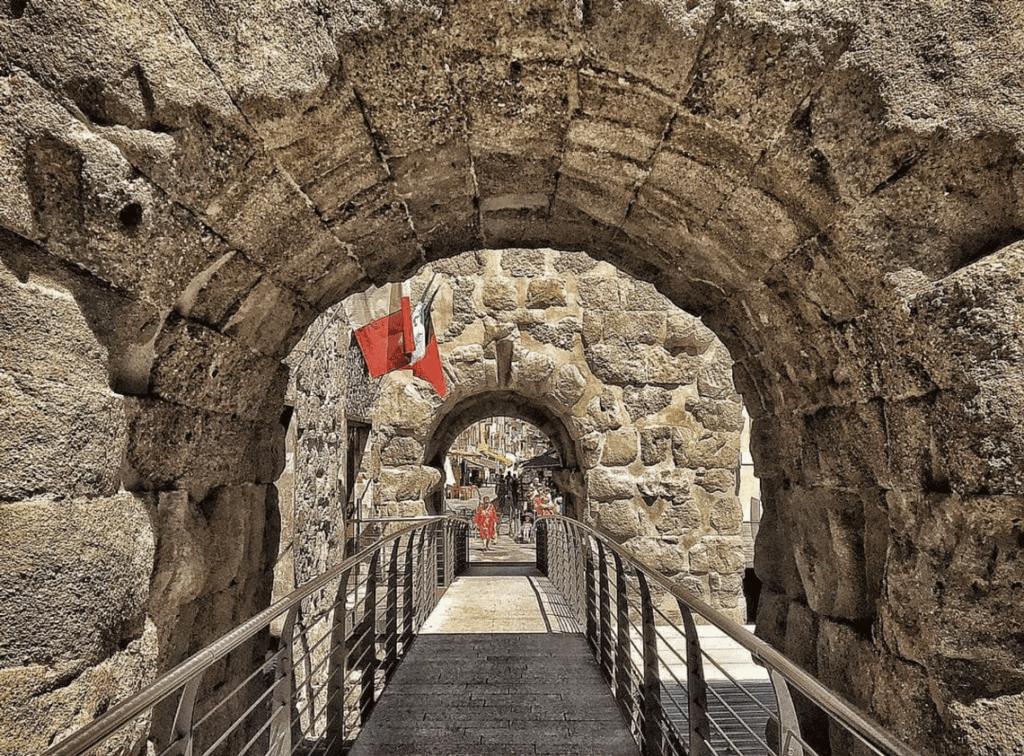
Teatro romano
In the immediate vicinity of the Porta Praetoria, along the old roman path Decumano Massimo that brings from East to West through the center of the city, stands one of the most iconic ancient monuments of Aosta – the Roman Theatre. Dating back to the first half of the first century AD, this imposing building is a masterpiece of early Roman Imperial architecture.
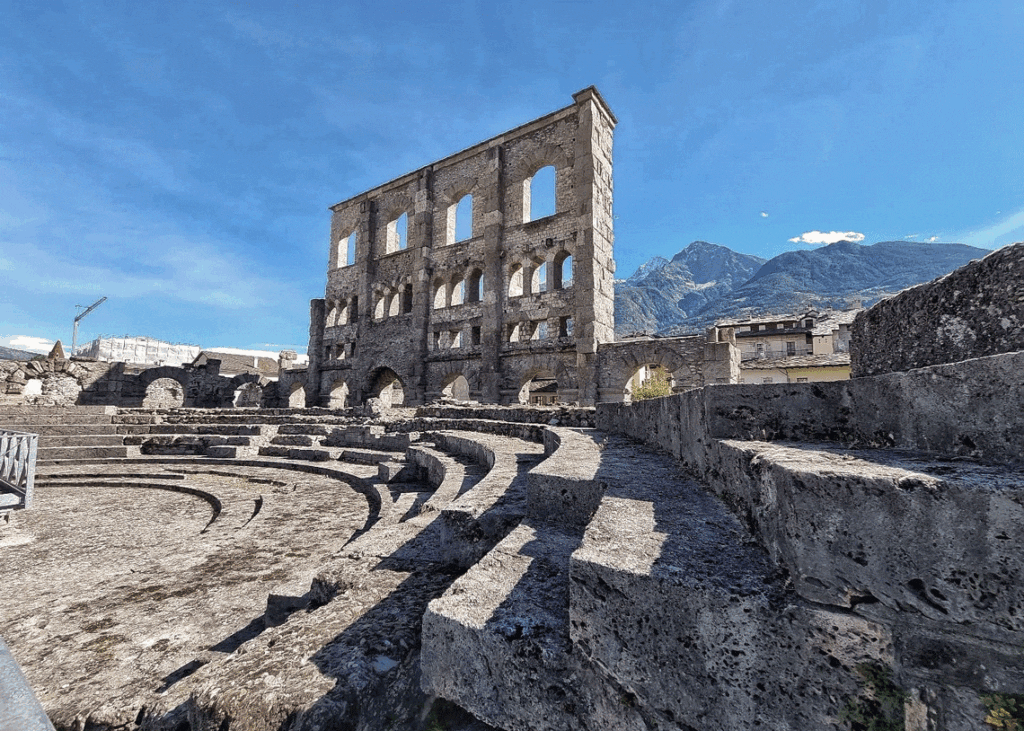
Built during the reign of Emperor Augustus it was a significant hub of social and cultural activities and was used for various forms of entertainment like theatrical performances or gladiator contests. Carved into the hillside, it provided a natural backdrop and excellent acoustics. It features a semi-circular orchestra, a stage, and a large seating area with well-preserved steps made of stone. The Roman Theater could accommodate around 3,500 spectators.
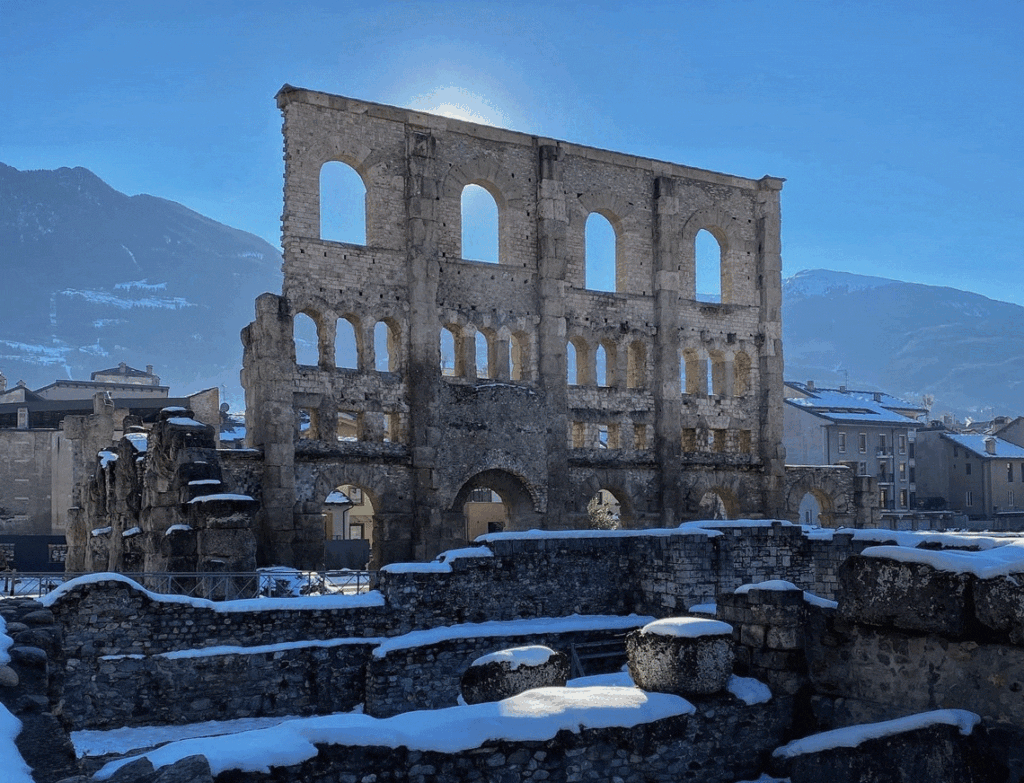
Piazza Émile Chanoux
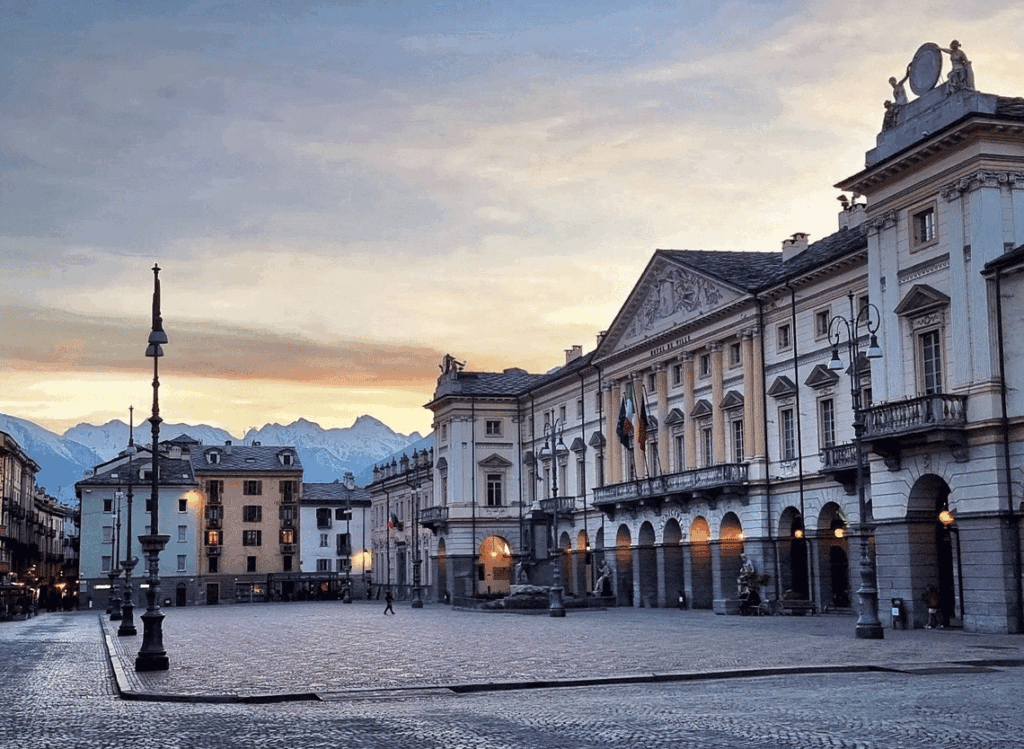
The central square Piazza Chanoux is the nerve center of the city with the important historical buildings: the palace that house the townhall named Hotel de Ville; historic building Hôtel des États; the house of the count Nicole de Bard; an elegant building named Maison Frassy that clearly recalls the art nouveau style; the building that housed the Hotel de Couronne et de la Poste; the historical National Café opened in the mid-nineteenth century which still retains the circular room in Gothic style.
The National Café, now under the direction of the young ‘starred’ chef Paolo Griffa, is splitted into two spaces: a pastry shop with tea room and a haute cuisine restaurant. It is absolutely recommended to make at least a stop for a breakfast or snack.
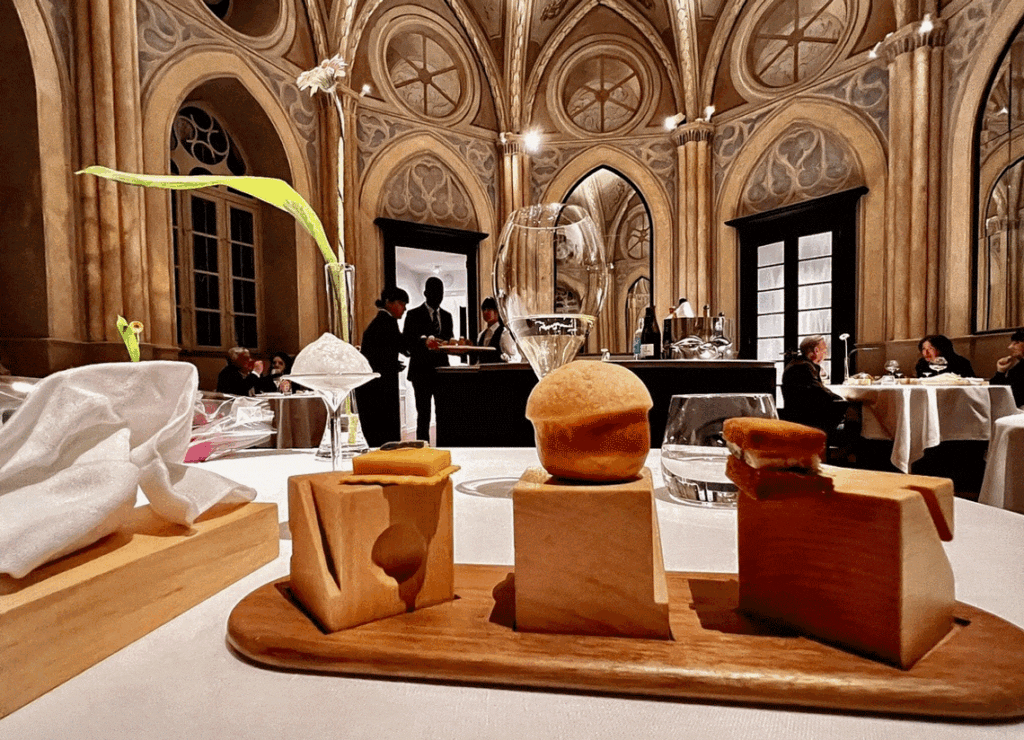
Cattedrale di Santa Maria Assunta
The Cathedral of Santa Maria Assunta e San Giovanni Battista, better known as Duomo di Aosta, boasts ancient origins. Born from a “Domus ecclesiae” of the fourth century as the first seat of the new Christian community of the Aosta Valley, it had continuous evolution in the following centuries passing from the Roman period to the Romanesque.
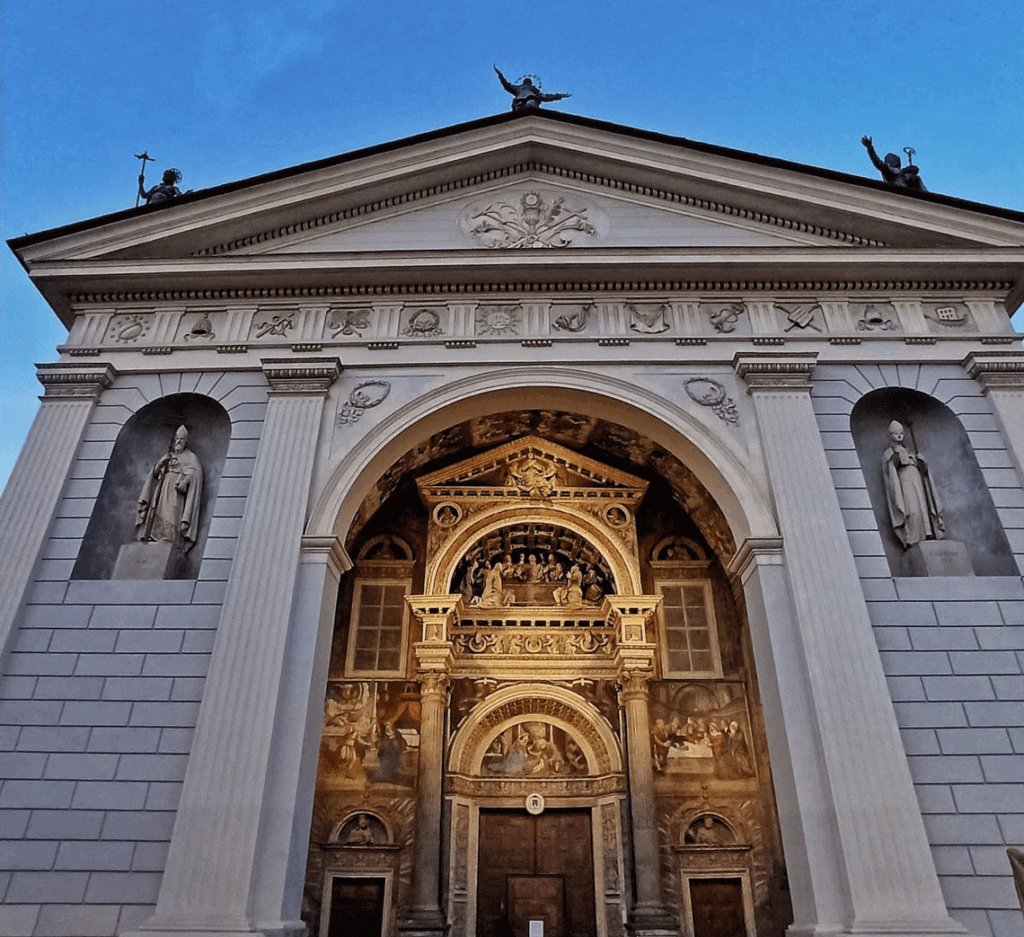
Subsequent and remarkable embellishments were made between the thirteenth and sixteenth century until reaching the neoclassical architecture represented by the white pediment which stands out imposingly overlooking the current frescoed entrance.
The beautiful sixteenth-century facade contains a cycle of frescoes and terracotta statues depicting some scenes of the life of the Virgin, to which the Cathedral is dedicated.
What makes the Cathedral of San Giovanni Battista and Santa Maria Assunta so famous in the national territory is also the presence in its interior of impressive frescoes and mosaics. Some of these historical finds are well preserved in the adjoining Treasure Museum while the major part is still visible right on the walls or in the floors of the church.
What about skiing?
Pila: between snowshoes, skiing and good food
The entire Aosta Valley delights snow enthusiasts but right above the city of Aosta there is Pila, a ski resort that starts at 1.800 meters a.s.l. with the distinction of having ski facilities at such high altitude definitely easy to reach from the city 🎿.
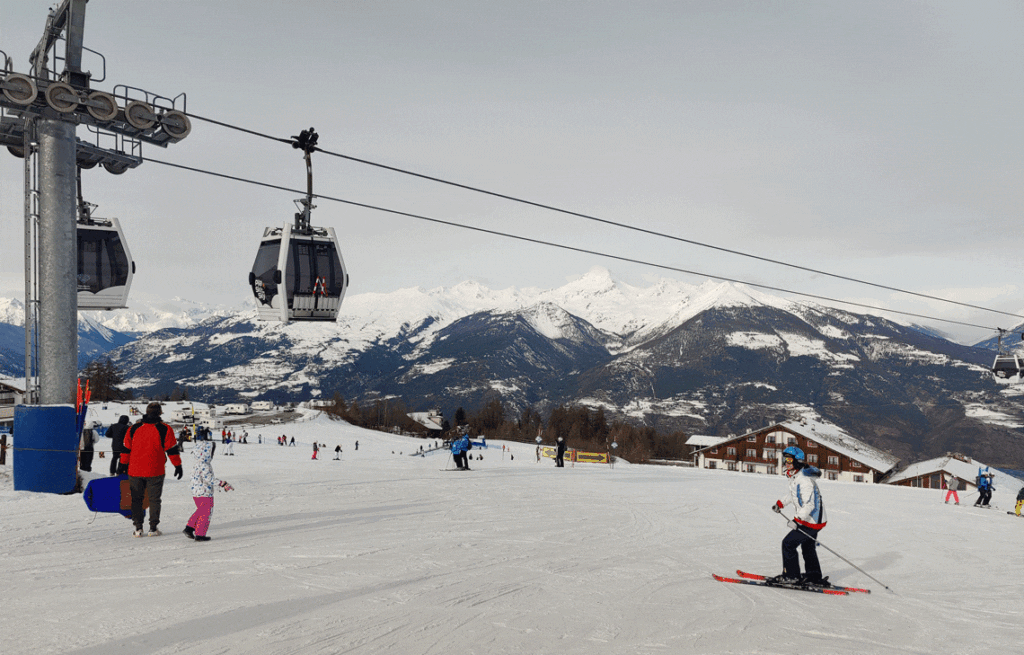
Park your car in the large lot near the cable car Aosta-Pila and then Buy tickets. for the funicolar. The round-trip costs only 8 euros per person.
In about only 18 minutes you will be that high!
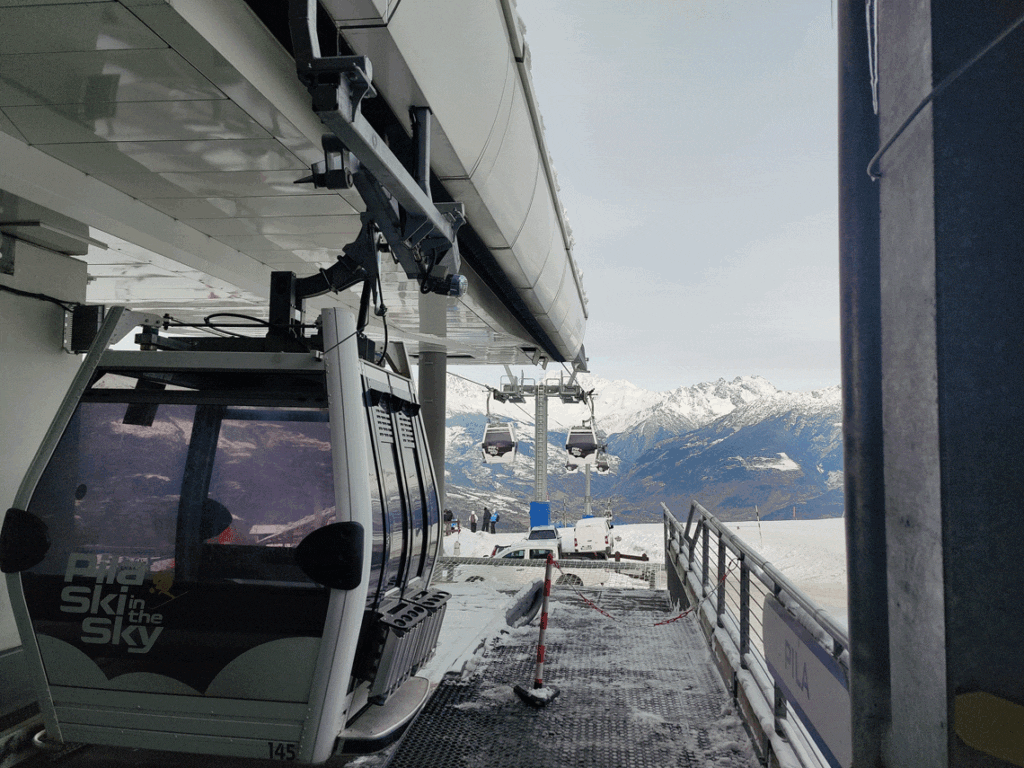
You can also reach Pila by car, follow the signs for Pila and continue uphill for half an hour with numerous hairpin bends. Once you reach the small town you will find a large car park.
Both in summer and in winter Pila offers a variety of ways to spend not only unforgettable moments in contact with nature, as hiking and skiing, but also modern and adrenaline sports, such as downhill and freeride. Skiers, whether experienced or beginners, can have fun on this ski area with 70 km of ski slopes ranging from 1,540 to 2,740 meters in altitude. You can also go snowshoeing or nordic skiing if you prefer not to go downhill.
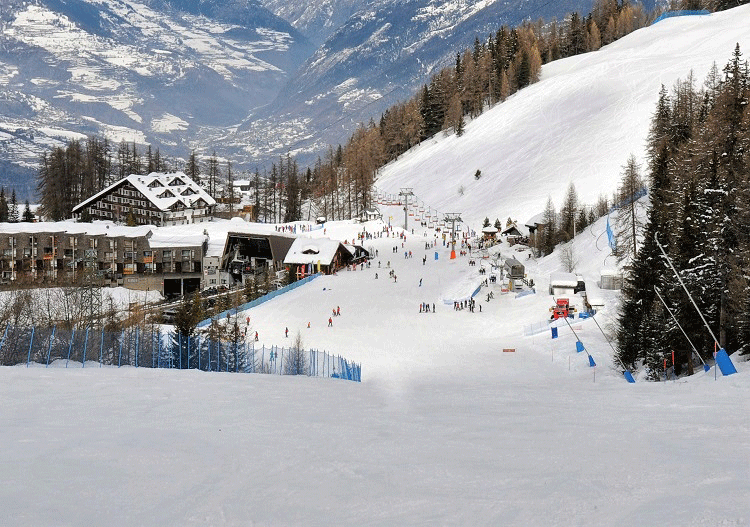
Pila also deserves to be known by food lovers. There is no lack of cozy and typical local at high altitude to refresh after skiing or during excursions.

Among the places to try are La Châtelaine with a large panoramic veranda, located on the edge of the of the ski slope; Lo Baoutson (at the departure point of the Couis 2chairlift) that focuses on the typical dishes of the Aosta Valley and Yeti Restaurant which offer excellent raw materials and refined dishes served impeccably, and all this overlooking the mountains. Its Mushroom risotto and Crespelle alla Valdostana were so delicious 😋.
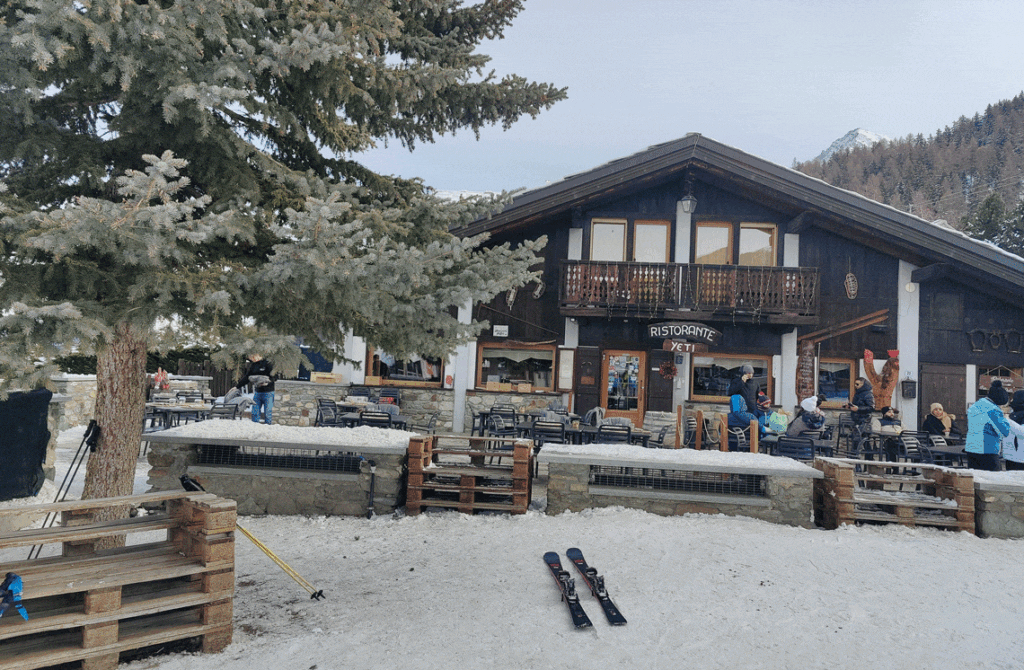
How to reach Aosta by bus from Milan:
You can easily reach Aosta from Milan by flixbus bus company the distance between Milan and Aosta is 177 kms and the journey takes on average 2 hours 40 minutes. The cost of tickets starting from just 9,99 €.
More things to visit in Aosta
The Valley is full of ancient castles sorrounded by beautiful scenery. If you have more time do not miss to visit the Forte di Bard, located just 46 kilometers from Aosta.
More information here: BARD FORT: ONE OF THE MOST BEAUTIFUL CASTLES IN AOSTA VALLEY.
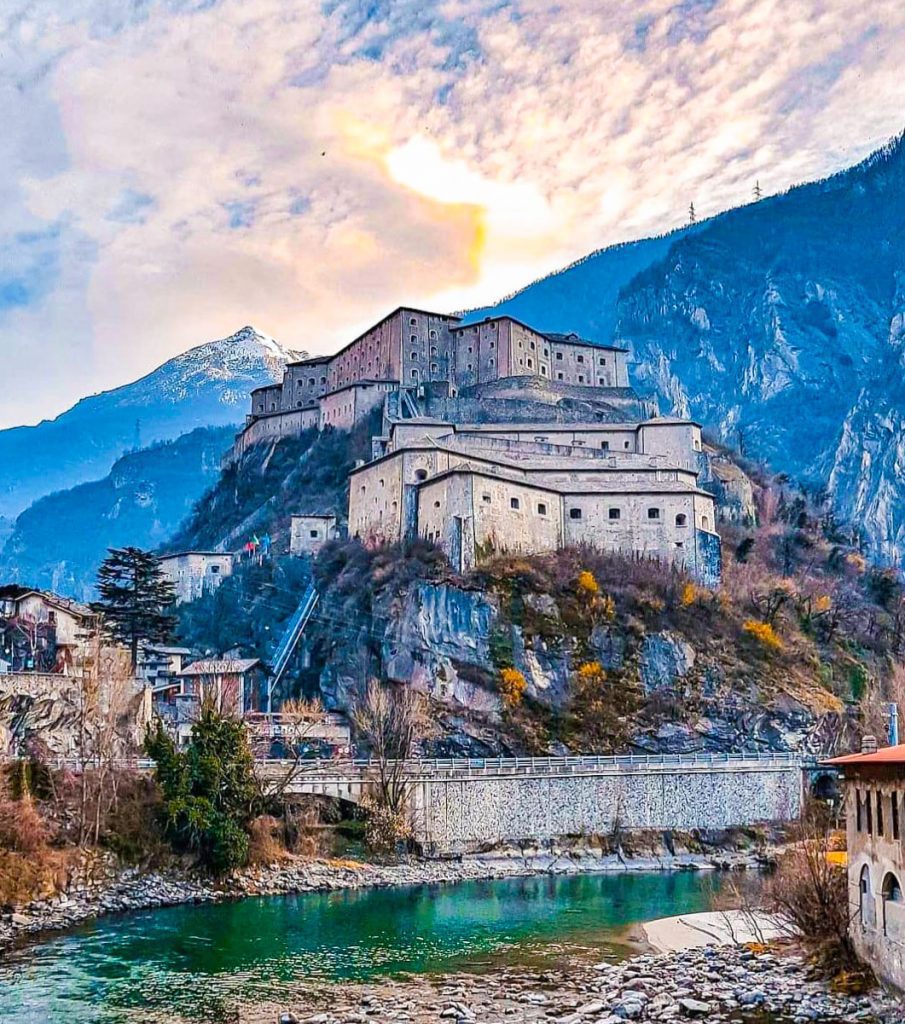
Enjoy your travel 😉









